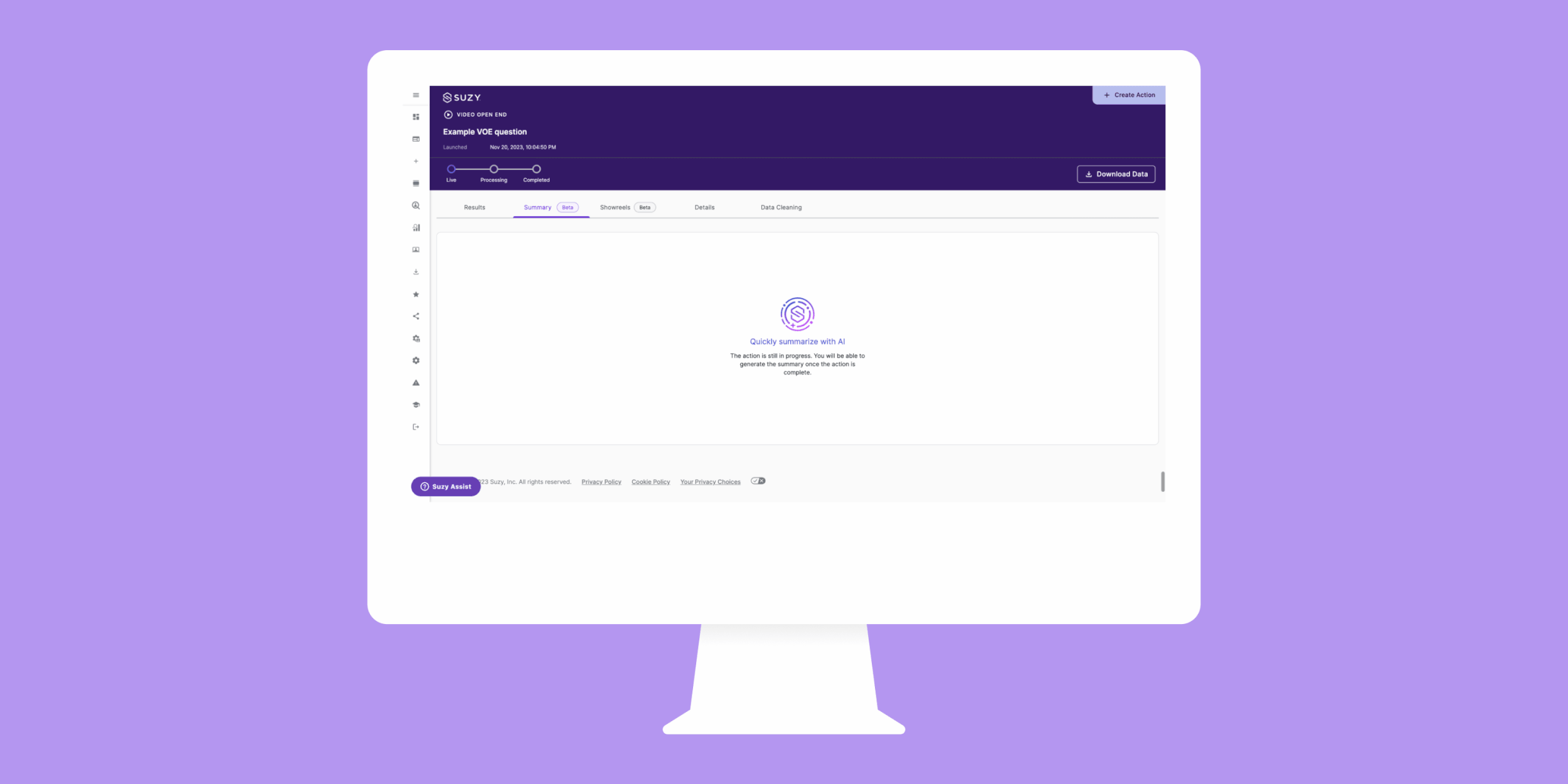UX/ UI Researcher and Designer
Suzy, Inc.
UX Researcher/ Designer, UI Designer
July 2021 - October 2024
Processes Involved:
User Research, User Interviews, Competitive Analysis, Workshops, Design Thinking, Usability Testing, Sketching, Wireframing, Prototyping, User Experience Design, Visual Design, Copywriting, Presentations
Suzy, Inc. is a B2B, real-time market research platform that enables businesses to quickly gather consumer insights through surveys and data analysis. It empowers companies to make data-driven decisions by offering instant feedback from targeted audiences and streamlining the research process for better marketing, product development, and customer engagement strategies.

Role and Key Responsibilities
As a UX Designer at Suzy, Inc., I focused on crafting seamless and intuitive user experiences that optimized platform usability, enabling clients to efficiently gather and leverage consumer insights.
Serving a diverse range of clients—from startups and small businesses to large enterprises and Fortune 500 companies—we ensured the platform could adapt to varying stages of research, empowering data-driven decision-making and enhancing business strategy.
Within Suzy, our team's role mirrored this adaptability; working in a small team required taking on multiple roles throughout the product lifecycle, from research and design to implementation and iteration.
User Research and Insights
Collaborating closely with Project Managers and Business Analysts, we thoroughly discussed project requirements to develop an optimal implementation plan and define the most effective set of deliverables.
To ensure a user-centered approach, project kick-offs were supported by in-depth research including workshops, client interviews, and competitive or comparative analyses.
With data-driven insights in hand, the ideation and exploration phase would commence, enabling us to create solutions rooted in user needs and research findings.

Design System and Process
One of the most impactful initiatives I collaborated on at Suzy was developing and implementing a formalized design system. This effort introduced consistency, streamlined the design process, and greatly improved the efficiency of our team’s workflow.
Each designer played a critical role in auditing the platform, carefully documenting use cases, and refining design elements to create a comprehensive library of reusable components. This standardized system established a cohesive visual language and interaction model, ensuring design uniformity across the platform.
Once finalized, these standardized components were integrated into the creation of new screens, enabling the team to develop features in a more organized, scalable, and maintainable way. This not only reduced design redundancies but also accelerated development timelines, fostering greater communication between design and engineering.
Results and Impact
As a UX Designer over the course of three years, my role contributed significantly to achieving key business insights and growth metrics, such as $60M in annual recurring revenue (ARR), over 400 customers, and a $12,000 average revenue per user (ARPU), with a 70% gross margin.
By focusing on user-centered design, I helped improve the platform’s usability and user satisfaction, leading to higher customer retention and acquisition. Tailoring user experiences to meet the diverse needs of our client base fostered stronger engagement, directly impacting the increase in ARPU.
Additionally, the design system I helped implement streamlined product development, reducing inefficiencies and contributing to a scalable, high-margin solution that supported the company’s rapid growth.

Reflection
My time as a UX/UI Researcher and Designer at Suzy enabled me to apply my previous experience to a fast-paced, agile startup environment within the B2B sector. This role also allowed me to translate academic principles into real-world solutions, driving both user-focused innovation and business growth.
Agile Work Environment
This was my first experience working in an Agile environment. As such, I quickly had to adapt to the fast-moving nature of 2-week sprints, where I rapidly conducted user research, prototyped, tested, and refined solutions in real time based on both user feedback and stakeholder input. This constant iteration pushed me to be flexible, efficient, and resourceful, ensuring that each design phase aligned with evolving project goals while maintaining a user-centered focus.
Designing B2B Solutions
Designing solutions for other businesses gave me the opportunity to tackle complex business challenges by creating designs that streamlined processes and enhanced efficiency. This experience allowed me to dive deeper into understanding the intricacies of different industries, client workflows, pain points, and opportunities. By focusing on these nuanced needs, I was able to deliver tailored, impactful solutions that not only addressed immediate challenges but also contributed to long-term business success.
Design System Implementation
Creating and implementing a formalized design system was a pivotal moment in advancing my skills as a UX/UI Designer. Adopting a design system mindset allowed me to think more strategically and holistically, rather than designing screens with disparate frames and elements. It greatly shifted my perspective and understanding of how to create and utilize components efficiently, ensuring consistency and scalability across the platform.
























